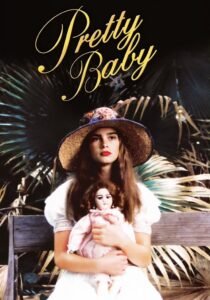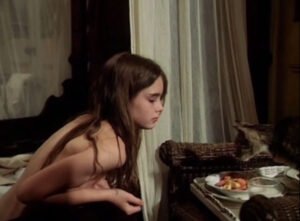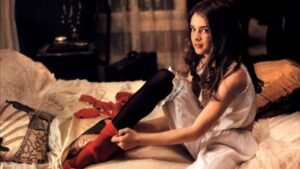A Deep Dive into Pretty Baby (1978): A Controversial Cinematic Gem

A Deep Dive into Pretty Baby (1978): A Controversial Cinematic Gem
Released in 1978, Pretty Baby is a film that continues to spark debate and analysis among cinephiles and critics alike. Directed by Louis Malle and starring a young Brooke Shields, the movie is set in the early 20th century and explores themes of innocence, exploitation, and societal decay in a manner both striking and unsettling. Let’s delve into the complexities of this controversial masterpiece.

A Bold Setting: Storyline and Context
Pretty Baby is set in 1917, in the red-light district of New Orleans during the final days of legalized prostitution. The story unfolds in a bordello managed by Madame Nell (Frances Faye), where Violet (Brooke Shields), a 12-year-old girl, resides with her mother, Hattie (Susan Sarandon), one of the establishment’s prostitutes. The narrative follows Violet’s coming-of-age journey as she navigates this morally ambiguous environment, culminating in her being auctioned off into prostitution and eventually entering into a complex relationship with a photographer, Bellocq (Keith Carradine).

Brooke Shields’ Breakout Role
At the heart of the film is Brooke Shields, whose portrayal of Violet catapulted her to fame. Only 12 years old at the time, Shields’ performance is a mix of vulnerability and precociousness, capturing the dichotomy of a child forced to grow up too quickly in a world that commodifies innocence. Shields’ casting and her depiction of such a controversial role sparked significant backlash and discussions about the ethics of involving a child actor in such mature themes.

Louis Malle’s Vision: Art Meets Controversy
Louis Malle, known for his nuanced storytelling and willingness to tackle taboo subjects, approached Pretty Baby with a lens that was both empathetic and unflinching. His direction does not shy away from the harsh realities of the environment he depicts, yet it maintains a lyrical, almost dreamlike quality. Malle’s focus on humanizing his characters while exposing the moral decay of their surroundings is a hallmark of his style.
The cinematography by Sven Nykvist adds to the film’s haunting beauty. Each frame feels like a vintage photograph, evoking the era’s aesthetic while juxtaposing the grimness of the subject matter.
Themes and Symbolism
- Innocence and Exploitation: At its core, Pretty Baby examines the loss of innocence in an exploitative world. Violet’s journey mirrors societal tendencies to romanticize and commodify youth while ignoring the moral implications.
- Motherhood and Survival: Hattie’s character, portrayed with depth by Susan Sarandon, presents a mother torn between her duties to her daughter and the realities of her own survival. Her eventual departure with her new husband highlights the sacrifices women in such environments often make.
- Art and Morality: Bellocq, the photographer, represents the artist’s gaze—both an observer and a participant in the world he documents. His relationship with Violet is portrayed as complex, straddling the line between protector and exploiter, raising questions about the role of art in ethical dilemmas.
Cultural and Critical Reception
Upon its release, Pretty Baby was met with both acclaim and outrage. Critics lauded the film’s artistic merit, praising Malle’s direction and the performances of the cast. However, the film also faced severe criticism for its portrayal of child sexuality and its use of a young actress in such a provocative role.
Some argued that the film’s subject matter crossed ethical boundaries, leading to calls for censorship and debates about the responsibilities of filmmakers. Despite this, Pretty Baby garnered recognition at prestigious platforms, including a nomination for the Palme d’Or at the Cannes Film Festival.
Legacy and Modern Perspectives
Decades later, Pretty Baby remains a polarizing piece of cinema. Modern viewers often approach the film with a more critical lens, considering the ethical implications of its production and the societal changes in attitudes toward child actors and sensitive topics. Nevertheless, the film is acknowledged as a daring exploration of uncomfortable truths, reflecting the complexities of human behavior and societal constructs.
Conclusion: A Controversial Masterpiece
Pretty Baby is a film that defies easy categorization. It is a work of art that challenges viewers to confront their own values and biases while offering a poignant, albeit unsettling, narrative. For Brooke Shields, it marked the beginning of a long and varied career. For Louis Malle, it cemented his reputation as a filmmaker unafraid to delve into society’s darkest corners.
While it is not a film for everyone, Pretty Baby deserves to be studied and discussed for its bold storytelling, artistic ambition, and the ethical questions it raises. Whether you view it as a masterpiece or a misstep, there’s no denying its lasting impact on the world of cinema.
